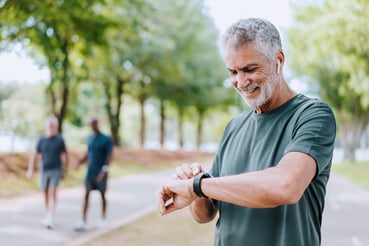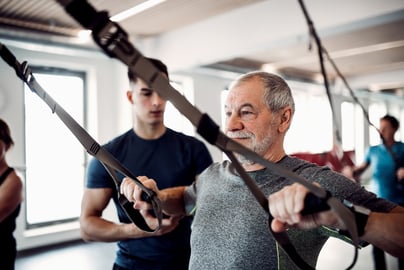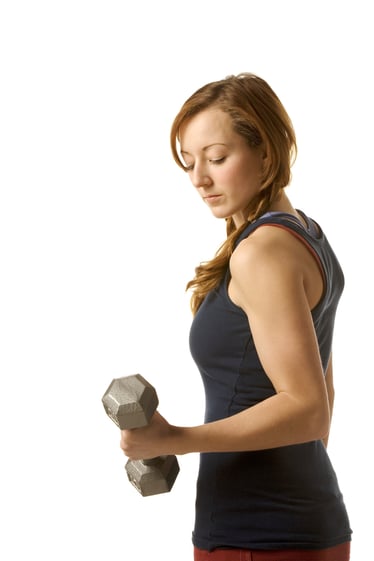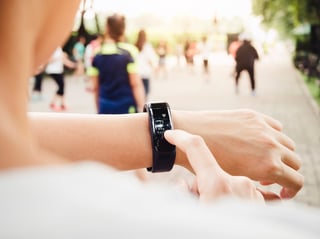You are constantly burning calories from food and drink and turning them into energy for the countless tasks your cells complete every minute. One of the most interesting features of metabolism is something many people outside the medical and fitness fields have never heard of: set point theory.
 Set point theory suggests that the human body maintains a predetermined range of body weight or fat mass through intricate physiological mechanisms. Rooted in the concept of homeostasis, it proposes that the body actively defends this “set point” much like a thermostat regulates temperature. First introduced in the 1950s and formalized through research in the 1980s and beyond, the theory helps explain why many individuals struggle to sustain weight loss long term. Evolutionarily, this defense system protected us from famine by conserving energy and promoting fat storage.
Set point theory suggests that the human body maintains a predetermined range of body weight or fat mass through intricate physiological mechanisms. Rooted in the concept of homeostasis, it proposes that the body actively defends this “set point” much like a thermostat regulates temperature. First introduced in the 1950s and formalized through research in the 1980s and beyond, the theory helps explain why many individuals struggle to sustain weight loss long term. Evolutionarily, this defense system protected us from famine by conserving energy and promoting fat storage.
This feedback loop is regulated by the brain, hormones, and metabolic processes. The hypothalamus integrates signals from hormones such as leptin (which promotes satiety) and ghrelin (which stimulates hunger) to adjust energy balance. When body weight falls below the defended set point, the body slows metabolism and increases ghrelin release, pushing weight upward. When weight exceeds the set point, mechanisms such as increased diet-induced thermogenesis and reduced hunger cues help bring it back down. Unfortunately, our modern food environment and sedentary lifestyles can disrupt this system and gradually elevate the set point over time.
Evidence supporting set point theory comes from multiple human and animal studies. After significant weight loss—whether from bariatric surgery, weight-loss competitions, or very low-calorie diets—most individuals regain much of the lost weight within 2–5 years. Persistent metabolic slowing works to defend the original set point. Studies involving identical twins also suggest genetics play a major role, as twins show similar set points despite different upbringings. Animal research further reinforces these patterns, with rodents returning rapidly to pre-intervention weights once normal feeding resumes.
Still, the theory has detractors. Emerging research indicates that sustained lifestyle changes—consistent resistance training, regular cardiovascular exercise, and balanced nutrition—may gradually lower the body’s preferred weight range. These habits can alter hormonal sensitivity, improve metabolic function, and even influence the gut microbiome in ways that support a lower set point.
The metabolic set point theory carries important implications for weight management. It strongly discourages crash diets or rapid weight-loss fads and instead supports sustainable, gradual approaches that work with your body, not against it. Strength training, meeting cardiovascular or step goals, and maintaining a nutrient-dense diet remain the gold standards.
Recent medications such as GLP-1 agonists also show promise for shifting the set point downward, though more long-term research is needed to determine how durable these effects are. Current evidence suggests that when these drugs are discontinued, individuals regain about 60% of the lost weight within a year.
And perhaps most importantly—especially during the holiday season—this research reminds us that consistency leaves room for occasional indulgence. So go ahead and enjoy that extra serving of your favorite holiday dish, and yes… maybe even a second slice of pumpkin pie. Just remember to get back to your routine when you’re back in the fitness center!

 Staying active and making healthy choices is important, especially as we get older. Strength training and maintaining a healthy body composition can make a big difference in how we move, look, and feel as we age.
Staying active and making healthy choices is important, especially as we get older. Strength training and maintaining a healthy body composition can make a big difference in how we move, look, and feel as we age.
 Improving your running time and efficiency can seem overwhelming. Whether you are a beginner or well-seasoned runner there is always room for performance improvement.
Improving your running time and efficiency can seem overwhelming. Whether you are a beginner or well-seasoned runner there is always room for performance improvement.
 Working with a senior population, the most commonly asked question I probably get is “How can I strengthen my legs/back/core.. etc?” As exercise professionals, we already know how as far as the exercise prescription goes, but with seniors, modality often becomes a challenge. Our clients typically have a whole range of physical issues to deal with including joint pain, balance issues, and overall weakness so the traditional sit-to-stand exercises aren’t always applicable. That’s where the TRX suspension training system comes into play.
Working with a senior population, the most commonly asked question I probably get is “How can I strengthen my legs/back/core.. etc?” As exercise professionals, we already know how as far as the exercise prescription goes, but with seniors, modality often becomes a challenge. Our clients typically have a whole range of physical issues to deal with including joint pain, balance issues, and overall weakness so the traditional sit-to-stand exercises aren’t always applicable. That’s where the TRX suspension training system comes into play. 
 Six months ago, a friend dared me to give up cardio for three months and focus on strength training. My initial response was, “No way! I’m a runner, I’ve always been a runner. There is no better exercise than running!” My friend was relentless and eventually I agreed to take a brief hiatus, although I was convinced that I would turn into a mushy ball of goo if I didn’t get in my daily run.
Six months ago, a friend dared me to give up cardio for three months and focus on strength training. My initial response was, “No way! I’m a runner, I’ve always been a runner. There is no better exercise than running!” My friend was relentless and eventually I agreed to take a brief hiatus, although I was convinced that I would turn into a mushy ball of goo if I didn’t get in my daily run. 
 Every year the
Every year the 
 As the Wellness Coordinator at NIFS, I get to meet a lot of great clients and help them attain their nutritional goals. I have noticed some common weight-loss questions that arise during the sessions. Hopefully if you have been wondering the same things, these answers will give you some more insight.
As the Wellness Coordinator at NIFS, I get to meet a lot of great clients and help them attain their nutritional goals. I have noticed some common weight-loss questions that arise during the sessions. Hopefully if you have been wondering the same things, these answers will give you some more insight.
 We have all heard the phrase “quality over quantity,” and most of us have even directed this adage at someone else. But do we really believe it? And if we do, why is every gym and fitness center in the country filled with people sacrificing form for a few additional reps and pounds?
We have all heard the phrase “quality over quantity,” and most of us have even directed this adage at someone else. But do we really believe it? And if we do, why is every gym and fitness center in the country filled with people sacrificing form for a few additional reps and pounds? One of the most overlooked factors of physical fitness is balance. This is especially important for the senior population, but balance is something every age group should think about. Balance is important in order to remain upright and steady when sitting up, standing, and walking. We utilize balance constantly in our daily routines without even thinking about it.
One of the most overlooked factors of physical fitness is balance. This is especially important for the senior population, but balance is something every age group should think about. Balance is important in order to remain upright and steady when sitting up, standing, and walking. We utilize balance constantly in our daily routines without even thinking about it.
